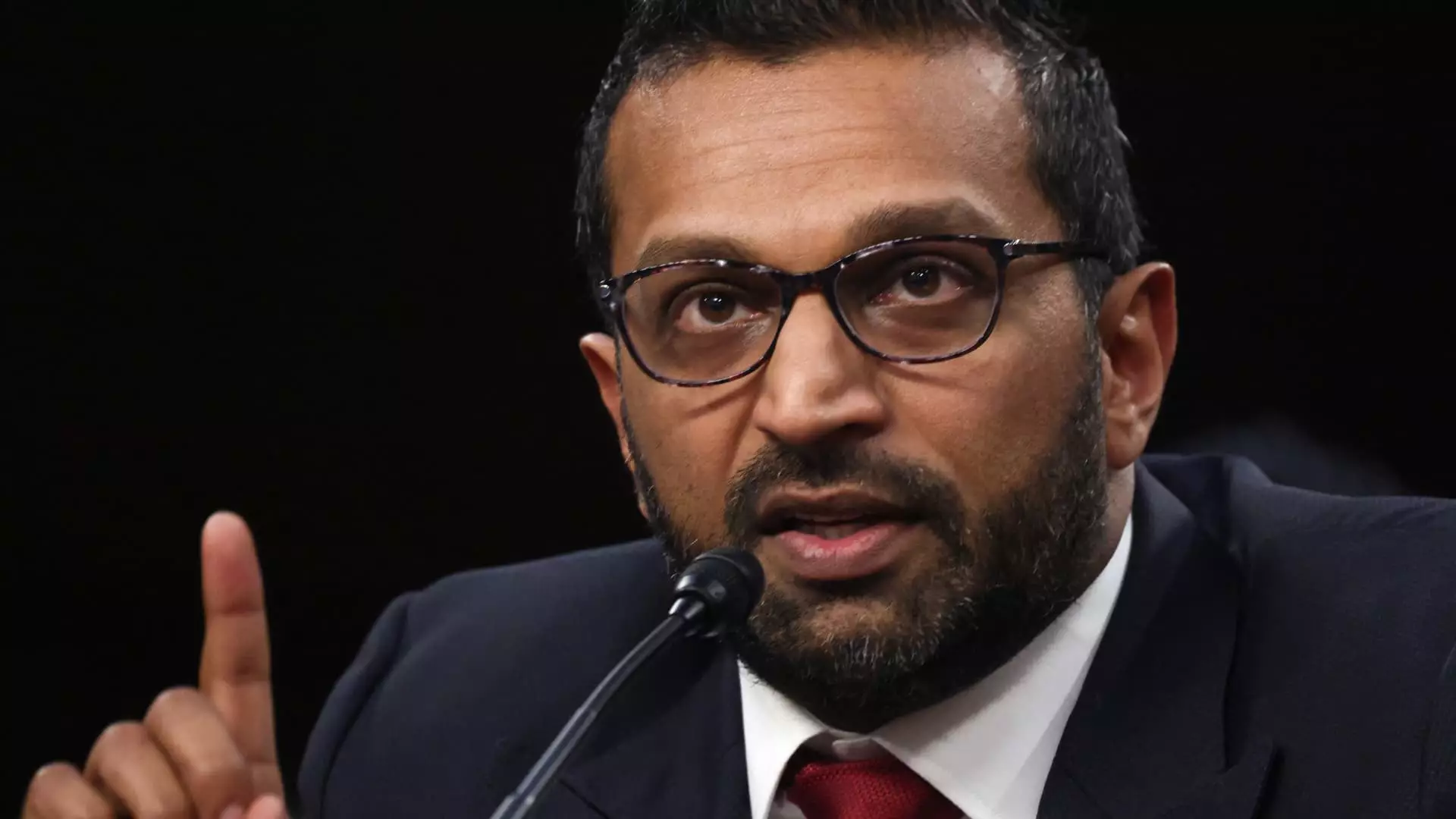The anticipated leadership change at the Bureau of Alcohol, Tobacco, Firearms and Explosives (ATF) with the appointment of Kash Patel as the acting head raises eyebrows within legal and political circles. Patel recently assumed the role of FBI Director, making him one of the few individuals to oversee two major components of the Justice Department simultaneously. This extraordinary circumstance not only garners attention due to Patel’s previous associations with former President Donald Trump but also stirs discussions regarding the future direction of these agencies, which have often been at the center of political controversy, especially among conservative factions.
Kash Patel’s confirmation on Friday, following a somewhat contentious Senate approval process, underscores the deep partisan divides that characterize contemporary governance in the United States. With Democrats expressing apprehension over Patel’s intentions to revamp the FBI—which they argue could undermine the agency’s integrity—it is critical to dissect what this dual leadership environment signifies for American law enforcement and regulatory practices.
The ATF, with a workforce of approximately 5,500, is responsible for managing a vast array of legal frameworks pertaining to firearms, explosives, and arson. Its mandate includes the licensing of federal firearms dealers, tracing firearms involved in criminal activities, and interpreting intelligence surrounding shooting incidents. However, the agency has faced persistent opposition from conservative circles, who have suggested that the ATF’s regulatory framework effectively infringes upon Second Amendment rights. The last serious attempt at confirming a director for the ATF, Steve Dettelbach, was marked by political gridlock and represents the first successful confirmation since 2015, highlighting the challenging environment these agencies operate within.
Patel’s new responsibilities come just after Attorney General Pam Bondi’s controversial dismissal of chief counsel Pamela Hicks, who had served the ATF for over twenty years. Such a dismissal, justified by Bondi as a corrective measure against the agency’s alleged targeting of lawful gun owners, creates an impression of instability within the agency’s upper echelons. This continuous shake-up raises questions about the operational efficacy of the ATF and the narrative that the agency is politically motivated rather than focused on public safety.
Patel’s previous endorsements of strong pro-gun narratives position him as a figure of contention for gun safety advocates. Groups such as Brady, which pushes for gun control, have labelled him a “known gun rights extremist,” thereby amplifying fears regarding a potential shift in how firearm regulations may be enforced under his leadership. Conversely, gun rights advocates view his appointment as bolstering their campaign for enhanced Second Amendment protections, with groups such as Gun Owners of America celebrating his ascension as a significant triumph.
As the Biden administration continues to impose rules aimed at tightening restrictions on firearms—including new regulations targeting ghost guns and mandating background checks at venues outside traditional storefronts—Patel’s leadership is poised to revisit these policies. Speculation surrounding whether he will seek to reverse the aforementioned measures underpins a broader narrative of how the political landscape will reshape law enforcement priorities, especially concerning firearm regulations.
Future Directions for the FBI and ATF
The unique arrangement of having one individual at the helm of both the FBI and ATF could lead to significant changes, not just within operational frameworks but also in public perception. Each agency is serving distinct roles within the Justice Department, yet they will be influenced by the same overarching leadership decisions. As the agencies navigate this uncharted territory, their respective missions could be at odds, leading to potential conflicts in priorities.
This dual leadership underscores the urgency for the Biden administration to maintain balanced governance over agencies that serve distinct but interconnected functions aimed at public safety. As Patel embarks on this dual role, the implications for policy, public perception, and agency integrity will undoubtedly be scrutinized in the coming months. The intersection of law enforcement leadership, political affiliations, and regulatory frameworks in the U.S. remains a critical arena for ongoing analysis and debate.


Leave a Reply